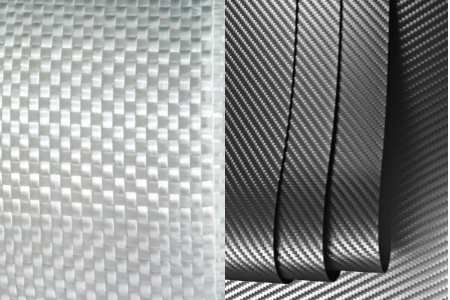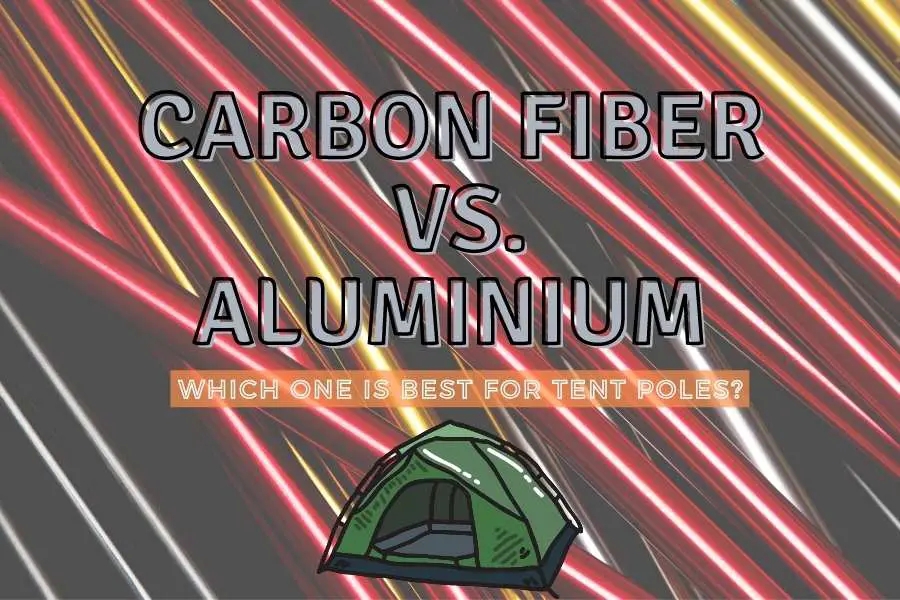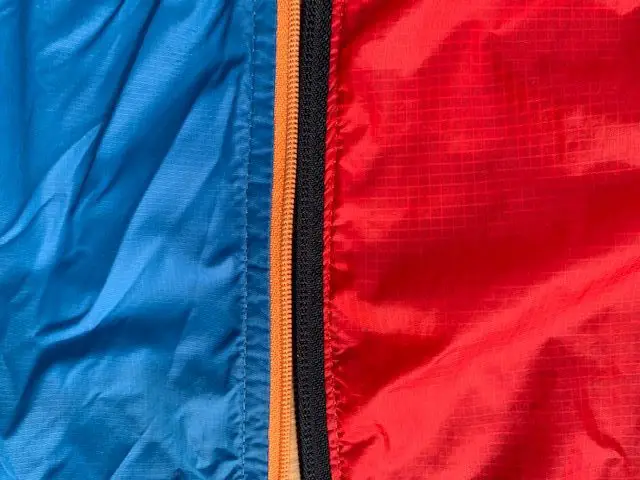I have previously written two posts on how to choose a flysheet material including the different types of nylon used for tents for your tent, but what about the tent poles?
Tent poles are usually made of strong and lightweight materials such as carbon fiber, aluminum, or fiberglass.
What are the advantages and disadvantages of each material? Is the more expensive carbon fiber material worth the extra money?
Carbon fiber tent poles are slightly lighter (but less than you think!) and stronger but more brittle and fairly expensive compared to aluminum. While carbon fiber is the better material, it comes at a price and it may wear down faster with frequent use.
So while carbon fiber seems like the obvious choice, if you can afford it, there are some important caveats that I will discuss below.
How much do Carbon Fiber and Aluminum tent poles weigh?
Many people going for ultralight hiking equipment are, naturally, most concerned with the weight when looking for their new ultralight tent – so how much weight do you save when going for carbon fiber instead of aluminum?
The aluminum used in tent poles weighs approximately 2.6 g/cm3 and carbon fiber tent pole material weighs approximately 1.5 g/cm3. In comparison, steel has a density of almost 8 g/cm3.
That is, aluminum is around 70% heavier than carbon fiber, making it almost twice as heavy as aluminum and ~5 times lighter than steel.
This is the dense material though, and tent poles are often hollow, so it is hard to compare directly.
For my two very similar 2-person tents with either aluminum or carbon fiber tent poles, the aluminum version (The Nordisk Telemark 2 LW) poles weigh 136 grams (4.8 oz) whereas the carbon fiber version (Nordisk Telemark 2 ULW) weighs 110g (3.9 oz).
Both poles are 302cm long, have a diameter of 8.1 cm, and are hollow with a nylon-reinforced rubberband material inside.
So with only 136 grams (4.8 oz) for an aluminum pole of an ultralight tent, there is naturally not much weight to save.
A difference of only 26g (0.9 oz) may not seem like a lot, in fact only a 20 % reduction in weight, but this suggests that the other materials included in these rods are quite substantial contributors to their weight.
Which Tent Poles are Strongest – Carbon Fiber or Aluminum?
Carbon fiber is generally strongest but it depends on the thickness and build quality of the poles, and how exactly we define “strength”.
Carbon fiber is very stiff and brittle compared to aluminum, meaning that it takes more force the start bending carbon fiber, but when it reaches its limit it cracks!
In fact, it takes 2-5 times more force to start bending carbon fiber compared to aluminum or steel.
This can be great if you want a steady tent, but may also be a disadvantage if the materials around the rod break before it absorbs some of the force to offload its surroundings (your tent flysheet may break…).

However, both carbon fiber and aluminum tent poles are strong and work reasonably well. If you are gentle with your tent poles and don’t subject them to extreme weather conditions, they are not likely to break.
It is also important to remember that the quality of the manufacture sometimes matters more than what material is used. E.g. there are really good and strong aluminum poles and quite bad carbon fiber poles available.
Some people claim that carbon-fiber tent poles break more easily, but this is not because carbon fiber is weaker than aluminum. Instead, aluminum bends quite a bit before it breaks, giving you a chance to notice that the pole is bending and given you a chance to straighten it back out.
Which kind of poles are better depends on whether or not they are likely to bend a lot in their application. This consideration should include the type of tent pole and the weather conditions in which the tent will be used. Obviously, the longer and more bend the poles are, and the windier the weather, the stronger they have to be.
If the poles will bend heavily, carbon is less likely to break, but if they do break there is no easy way to fix them. Carbon fiber also breaks in a way where sharp ends will be exposed (see video below!) to the flysheet of the tent which may more easily cut holes in the tent. It is also very hard to properly repair a broken carbon fiber rod once broken.
Aluminum on the other hand is less likely to suddenly snap, but will more easily bend and deform permanently even at low force loads.

structure of most tent poles makes them lighter, but more likely to snap than a solid rod.
Some aluminum poles are more flexible than others, so they may snap if you buy the wrong brand of aluminum tent poles. You need to buy from the right company if you want to really get the benefits of aluminum’s flexibility.
If the poles have a function in the tent where they are more likely to keep a straight formation such as a center rod in a Tippie tent, there are not the same requirements for the flexural strength of the pole. Therefore, carbon fiber may be chosen if weight is crucial, and aluminum if the price is more important.
Notice how the aluminum bends but does not break, whereas the conventional carbon fiber rod breaks.
Durability and Long Term Use
I own two tents (The Nordisk Telemark 2 LW and the Nordisk Telemark 2 ULW) that are pretty much identical except for one having aluminum poles (LW) and the other having carbon fiber rods (ULW = ultra-lightweight). The obvious difference between the two is the weight, but I have also noticed a difference at the ends where each segment of the foldable rods connects.
Here, the carbon fiber rod has started to round off and show signs of tear, resulting in a more loose connection between the segments of the rod.
I have also noticed some dust from the material around the edge of the carbon fiber rods. Therefore I can imagine, that with time, the carbon fiber rods will decrease in diameter and eventually result in a more unstable and unreliable connection between the segments of the rod.
The faster wear on the carbon fiber rods may also result in sharper edges that may cut the elastic nylon wire inside the rod.
It may also manifest at other connection points such as where the rod is fastened to the ring that holds the end to the ground or elsewhere on the tent. This would lead to weak points of the rod that would more easily break in a storm or other disruptions.
Another weakness of carbon poles I hear from fellow hikers is that even though the main pole is made up of carbon fiber, the tips are sometimes made from aluminum that ends up breaking instead of the actual carbon part…

The aluminum ends such as those shown above for the Six Moon Designs tent, will often be the “weak link” of a carbon fiber pole.
Overall we can sum up the previous section with the following pros and cons.
Pros and Cons of Carbon Fiber Tent Poles
- Pro: More than anything else, carbon fiber poles are stronger relative to their weight than aluminum poles.
- Pro: When a carbon fiber pole breaks, it usually only breaks in one section, which may not ruin the whole pole.
- Con: Carbon fiber poles are more expensive.
- Con: Carbon fiber poles can suddenly and unexpectedly snap because they are more stiff and will bend less.
- Con: The material is softer and wears down with repeated use. See my experience above.
Pros and Cons of Aluminum Tent Poles
- Pro: Aluminum tent poles are cheaper.
- Pro: While aluminum poles are technically weaker, they seem to be stronger in real life experience to many people, and many say they feel more sturdy and safe.
- Pro: Aluminum poles are flexible which may spare surrounding material.
- Pro: You can tell aluminum is fatiguing and may soon break by how much it is bending.
- Con: Aluminum will deform more easily which can be corrected but is annoying.
- Con: Lower-quality aluminum poles break more easily with repeated stress (e.g. heavy repeated winds all night) than most carbon fiber options.
- Con: Aluminum poles are heavier (although not as much as most carbon fiber manufactures will have you think).
Carbon Fiber VS Aluminum for Tarp Poles
So tents are one thing, and the conclusion will depend on the type of tent – but what about tarps?
Tarps are much easier to set up than tents, and here the poles are often static and straight, so snapping a pole is much less likely.
I would say, go with the cheaper poles.
However, depending on how you set up your tarp, there can still be a lot of strain on the poles. This means that the extra strength of carbon fiber may still be somewhat relevant, but less compared to a tent.
So, in my opinion, aluminum is a better choice for tarps.
You are not likely to sleep out in stormy weather with a tarp anyways, so the strain on the pole will be minimal and aluminum has plenty of strength for most tarp situations.
What are Some Other Tent Pole Materials?
Along with aluminum and carbon fiber, one of the most common materials for tent poles is fiberglass.
With a density of 2g/cm3 they weigh in-between carbon fiber and aluminum and fiberglass won’t save much weight compared to modern aluminum rods.
Fiberglass tent poles are cheap and have some advantages besides their price but are not as strong.
They are harder and might last a long time compared to carbon fiber if you are gentle with them, but they will break more easily compared to carbon fiber in heavy wind.
Composite materials such as fiberglass and carbon fiber are generally a good choice as they are stronger than aluminum poles, but also more expensive to make.
Steel is very strong, but it is also heavy, so only use it if you don’t have to carry your tent far away from your car.
Fiberglass VS Carbon Fiber Tent Poles
Carbon fiber is usually better, but fiberglass is 2-3 times cheaper. Significant advantages of fiberglass tent poles are that they are less brittle and rigid and don’t conduct electricity (which in a thunderstorm, could save your life).

their structures and build. But the basic components, silica and carbon, have
different physical properties.
However, fiberglass poles are more prone to UV degradation and thermal expansion that may weaken them in the long run.
Conclusion
Personally, having owned several tents with both aluminum and carbon fiber rods, I do not want to pay the extra price of carbon fiber poles.
It is nice to save weight, but it ends up being a very small amount, partly because even the most budget-friendly manufacturers are very good at making light tents with aluminum poles, and partly because there are so many other aspects and components of a tent pole that have to be reinforced or cannot be made from carbon fiber.
The flysheet of lightweight tents can be made of nylon and polyester, but are most often made from different types of nylon if the weight is important to you.




